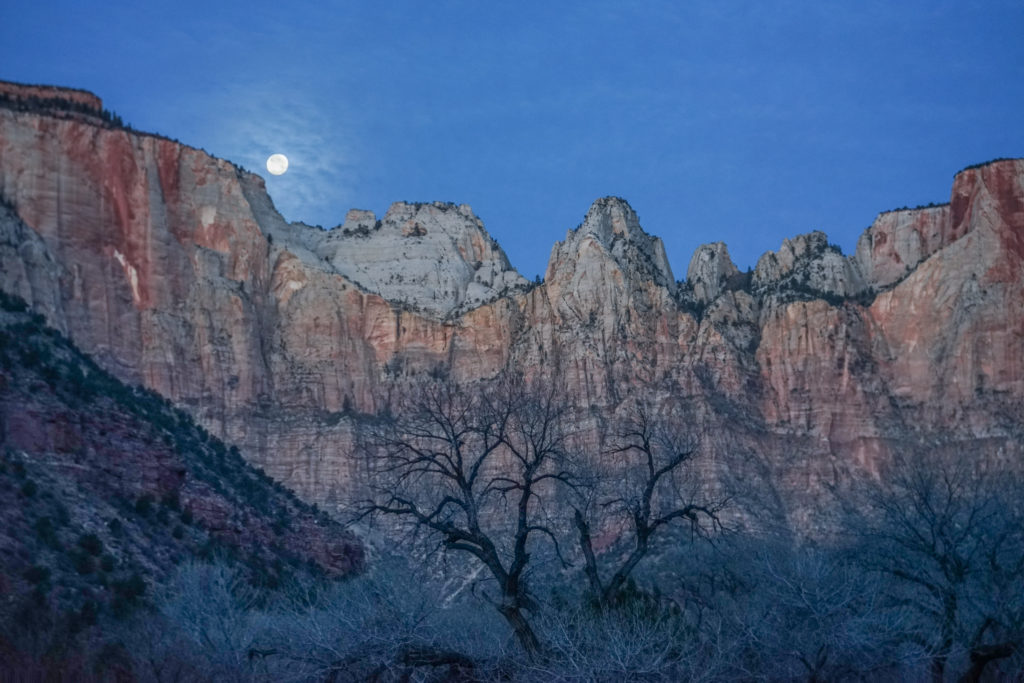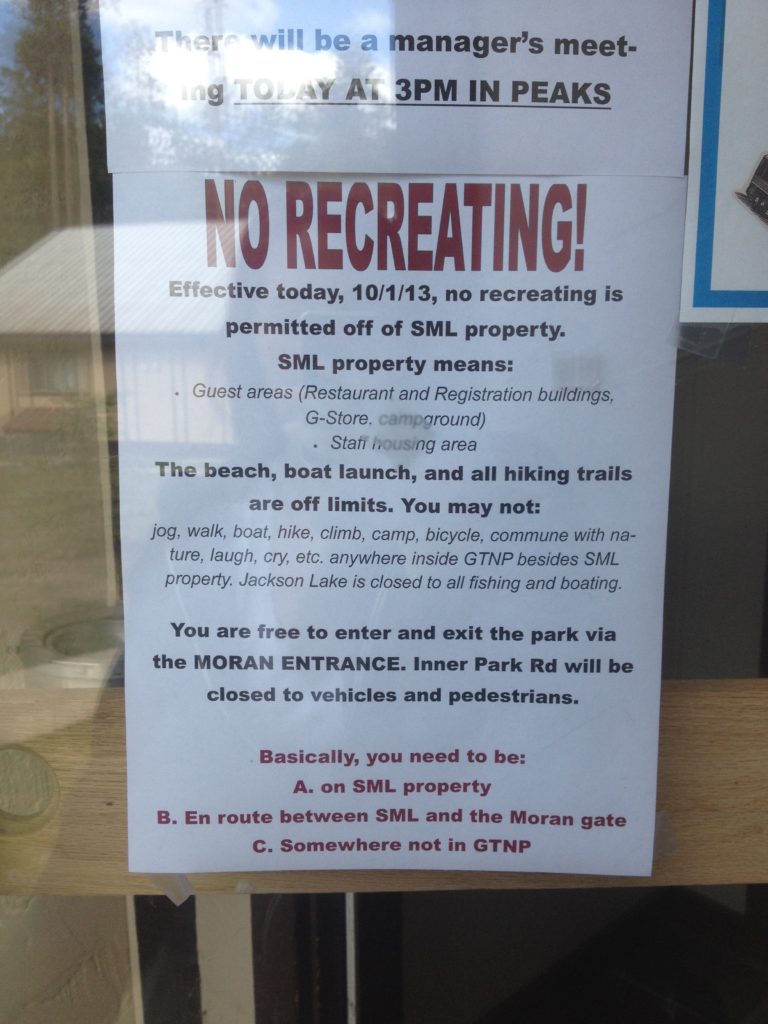On Friday January 18, Congress failed to come to an agreement on a budget and a Government Shutdown occurred. Unfortunately, this is not the first time this has happened and it will not be the last. However, what was different about this shutdown was that the national parks remained open. Today, we are going to examine the pros and cons of that decision and about how this shutdown (and future shutdowns) has the ability to affect our public lands.
The last government shutdown we had was in 2013. It lasted 16 days. I was a seasonal concessionaire employee in Grand Teton National Park at the time, and my season was cut short, I was laid off and sent packing. I remember not knowing what to do; I had no plans and was just forced to move out of my home with no place to go and no money in my pocket. It wasn’t fun. But I didn’t leave immediately, for 6 days I remained in a closed park. The best way to describe it was like being on house arrest. The sign below demonstrates just how intense it was. We weren’t even allowed in our own backyard. And it wasn’t just us who couldn’t visit the park; it was thousands of tourists visiting all kinds of parks across the United States. People from all around the world who planned these vacations and spent tons of money to just have to cancel them. An estimated $7 million was lost in park entrance fees alone, and untold amounts were lost from the local economies as a result of the decision to close the parks.
That is why when I initially heard that the parks would remain open during this shutdown, I thought it was a good idea. Local economies would not suffer as much, people wouldn’t have to cancel their vacations, and those seasonal employees (like I had been back in 2013) would be allowed to keep their jobs. But then, I realized that while the parks would be open, they would not be staffed, and got a sinking feeling in my stomach.
Unstaffed parks? What exactly does that mean? It means that while there would continue to be people visiting these places, there would be no restrooms, no trash cans, no road maintenance (aka snow plows, which are important in January), and very limited law enforcement and search and rescue. While it may not seem like a big issue to some, I work in these parks and I know what that translates into. I have seen it compared to taking all the contents of the Smithsonian and leaving them out on lawn and trusting people to take care of it. It’s a nice idea, and you would hope that these places (or items) command enough respect from people that you can trust them to take care of it. Good in theory, bad in practice.
Sure trash can be picked up, restrooms can be cleaned. Most vandalism can be repaired. But these places are priceless, and not everything can be fixed. Luckily this shutdown only lasted three days, but still in those three days, people managed to make a mess of things and get themselves in trouble. Snowmobilers were caught getting way too close to Old Faithful in Yellowstone, here in Zion we had a pregnant elk poached, and those are just some of the issues for the sake of brevity. Look, I of all people recognize the economic value of keeping the parks open, however some things are just not worth the risk in my opinion. What if this snowmobiler had permanently damaged Old Faithful? What would be the dollar value of losing something like that? Here’s my take, if you are going to keep the parks open, at the very least you need to provide them with the bare minimum of staff to keep things like this from occurring. Doing otherwise is just irresponsible.


